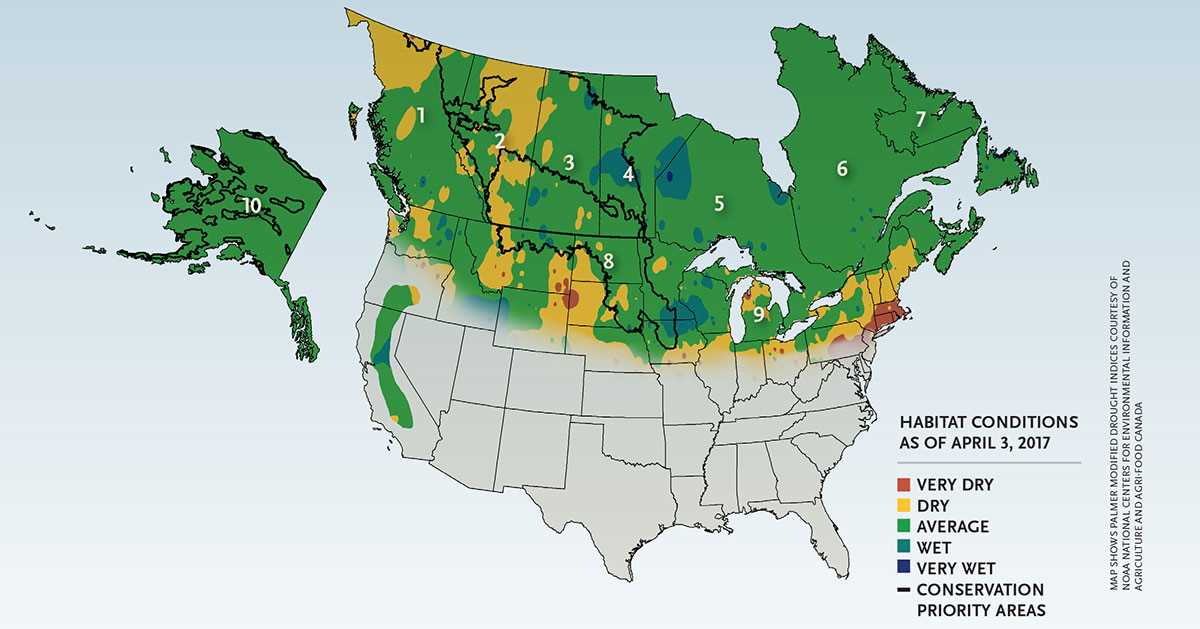
By DU Field Biologists
1. BRITISH COLUMBIA After recent thaws, the ground surface in the interior and Peace parkland regions is saturated with water. As a result, wetland conditions are favorable for returning waterfowl, which started to arrive in the southern interior in early March.
2. ALBERTA Despite below-average winter snowfall, soil moisture levels are near or above normal across most of the province thanks to plentiful fall precipitation. Additional moisture will be needed to maintain or improve wetland conditions in many areas.
3. SASKATCHEWAN Following a wet fall, many wetlands were at or above peak levels at freeze-up. Winter snowfall was below average across most of the province, except in the southwest and southeast, where there was a good snowpack. Overall, wetland conditions are expected to be good to excellent this spring.
4. MANITOBA A good frost seal and above-average winter snowfall have set the stage for heavy runoff in southwestern Manitoba. Although spring flooding may be a problem in some areas, wetlands are expected to be full and attractive to breeding waterfowl this spring.
5. ONTARIO The Great Lakes were largely ice-free this winter, benefiting wintering sea ducks and divers. The spring runoff has already occurred in the south, and waterfowl are arriving early.
6. QUEBEC Winter precipitation was close to normal across much of this province. In the south, returning waterfowl were met with cold temperatures and snow in mid-March.
7. ATLANTIC CANADA Overwintering conditions were generally good for waterfowl in this region, especially in the south, where tidal rivers and estuaries remained open. Snow from late-winter storms has melted, leaving plenty of open water and seasonal wetland habitat for waterfowl.
8. NORTH-CENTRAL U.S. Winter precipitation across much of the northern plains was slightly above average. Wetland conditions are in generally good shape for early-arriving dabblers, especially in eastern North Dakota. Additional precipitation will be needed in many areas to maintain wetland conditions.
9. GREAT LAKES AND NORTHEASTERN U.S. Above-normal precipitation has benefited wetland habitats in the Great Lakes region. Very dry conditions persist in the Northeast, where significant precipitation will be required to improve wetland conditions.
10. WESTERN U.S. Above-average winter precipitation and spring storms have dramatically improved waterfowl habitats across the West. Wetland conditions are good throughout the Central Valley of California, the Klamath Basin, and other parts of the Intermountain West. In Alaska, wetland conditions are expected to be generally favorable for breeding waterfowl this spring.
Ducks Unlimited uses cookies to enhance your browsing experience, optimize site functionality, analyze traffic, and deliver personalized advertising through third parties. By continuing to use this site, you agree to our use of cookies. View Privacy Policy